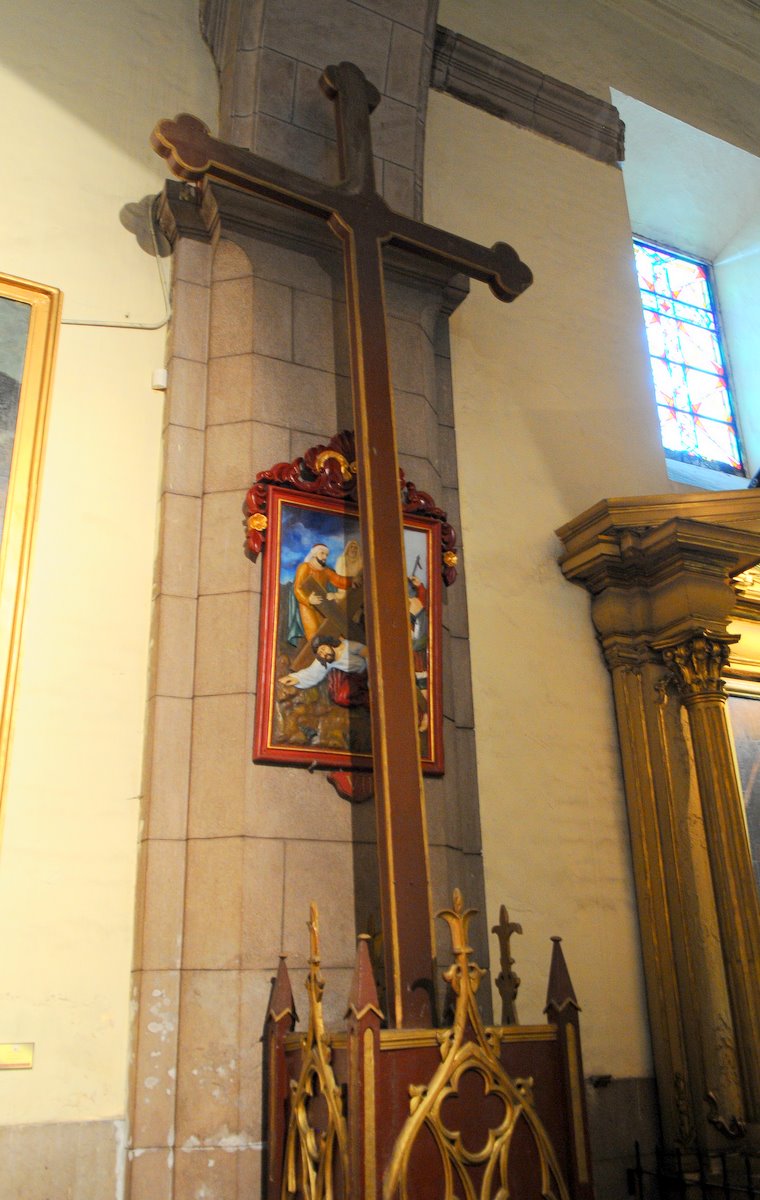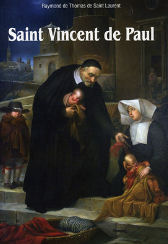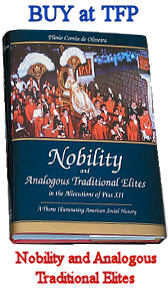Garcia Moreno
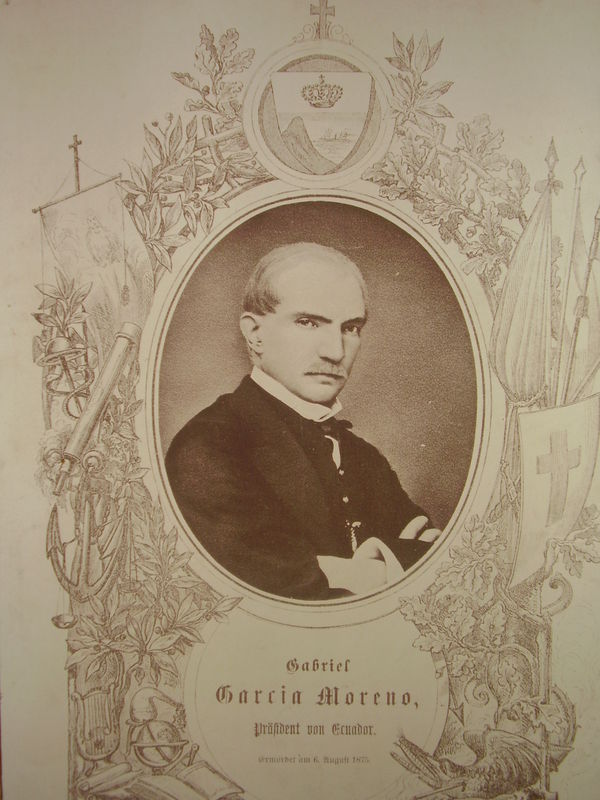 Ecuadorean patriot and statesman; born at Guayaquil, 24 December, 1821; assassinated at Quito, 6 August, 1875.
Ecuadorean patriot and statesman; born at Guayaquil, 24 December, 1821; assassinated at Quito, 6 August, 1875.
His father, Gabriel García Gomez, a native of Villaverde, in Old Castile, had been engaged in commerce at Callao before removing to Guayaquil, where he married Dona Mercedes Moreno, the mother of the future Ecuadorean martyr president. Gabriel García Gomez died while his son was still young, and the boy’s education was left to the care of his mother, who appears to have been a woman of unusual ability for her task; she was, moreover, fortunate in securing as her son’s tutor Fray Jose Betancourt, the famous Mercedarian, under whose tuition young García Moreno made rapid progress. A great part of his father’s fortune having been lost, it was not without some considerable sacrifices that the youth was able to attend the university course at Quito. These material obstacles once overcome, he passed brilliantly through the schools, distancing all his contemporaries, and on 26 October, 1844, received his degree in the faculty of law (Doctor en Jurisprudencia) from the University of Quito.
In less than a year after his graduation young García Moreno had begun to take an active part in Ecuadorean politics, joining in the revolutionary movement which eventually replaced the Flores administration by that of Roca (1846). He soon distinguished himself as a political satirist by contributions to “El Zurriago”, but what more truly presaged the achievements of his riper life was his good and useful work as a member of the municipal council of Quito. At the same time he was studying legal practice, and on 30 March, 1848, was admitted advocate. Immediately after this the deposed Flores, supported by the Spanish government, made an attempt to regain the presidency of Ecuador; García Moreno unhesitatingly came forward in support of the Roca administration, and when that administration fell, in 1849, he entered upon his first period of exile. After some months spent in Europe he returned to his native republic in the employ of a mercantile concern, and it was then that he took the first decisive step which marked him conspicuously for the enmity of the anti-Catholics, or, as they preferred to call themselves, the Liberals. At Panama he had fallen in with a party of Jesuits who had been expelled from the Republic of New Granada and wished to find asylum in Ecuador. García Moreno constituted himself the protector of these religious, and they sailed with him for Guayaquil; but on the same vessel that carried the Jesuits and their champion, an envoy from New Granada also took passage for the express purpose of bringing diplomatic influence to bear with the dictator, Diego Noboa, to secure their exclusion from Ecuadorean territory. No sooner had the vessel entered the harbour of Guayaquil than García Moreno, slipping into a shore boat, succeeded in landing some time before the New Granadan envoy; the necessary permission was acquired from the Ecuadorean government, and the Jesuits obtained a foothold in that country. How soon the report of this exploit spread among the anti-Catholics of South America was evidenced by the fact that within a year Jacobo Sánchez, a New Granadan, had attacked García Moreno in the pamphlet “Don Felix Frias en Paris y los Jesuitas en el Ecuador”, to which García Moreno’s reply was an able “Defensa de los Jesuitas”.
In 1853 he began to publish “La Nación”, a periodical which, according to its prospectus, was intended to combat the then existing tendency of the government to exploit the masses for the material benefit of those who happened to be in power. At the same time García Moreno’s programme aimed distinctly and professedly to defend the religion of the people. He was already known as a friend of the Jesuits; he now assumed the role of friend of the common people, to which he adhered sincerely and consistently to the day of his death. The Urbina faction, then in power, were quick to recognize the importance of “La Nación”, which was suppressed before the appearance of its third number, and its proprietor was exiled, for the second time. Having been, meanwhile, elected senator by his native province of Guayaquil, he was prevented from taking his seat, on the ground that he had returned to Quito without a passport. After a sojourn at Paita, García Moreno once more visited Europe. He was now thirty-three years of age, and his experience of political life in Ecuador had deeply convinced him of his people’s need of enlightenment. It was undoubtedly with this conviction as his guide and incentive that he spent a year or more in Paris, foregoing every form of pleasure, a severe, indefatigable student not only of political science, but also of the higher mathematics, of chemistry, and of the French public school system. On his return home, under a general amnesty in 1850, he became rector of the central University of Quito; a position of which he availed himself to commence lectures of his own in physical science. Next year he was active in the senate in opposition to the Masonic party, which had gained control of the government, while at the same time he persistently and forcibly, though unsuccessfully, struggled for the passage of a law establishing a system of public education modelled on that of France. In 1858 he once more established a paper, “La Union Naciónal”, which became obnoxious to the government by its fearless exposure of corruption and its opposition to the arbitrary employment of authority; and once more a political crisis ensued.
García Moreno was on principle an advocate of orderly processes of government, and that his professions in this regard were sincere his subsequent career fairly demonstrated, but at this juncture he was obliged to realize that his country was in the grip of a corrupt oligarchy, bent upon the suppression of the Church to which the whole mass of his fellow countrymen were devoted, and disposed to keep the masses in ignorance so as to sway them the more easily to its own ends. He had, years before, attacked “the revolutionary industry”, a phrase probably first used by him, in the prospectus of “La Nación”; it now became necessary for him to descend to revolutionary methods. Besides, the little Republic of Ecuador was at this time menaced by its more powerful neighbour on the south, Peru. García Moreno, if he was sure of opposition at the hands of the soi-disant Liberals, was also, by this time, recognized by the masses as a leader loyal to both their common Faith and their common country, and thus he was able to organize the revolution which made him head of a provisional government established at Quito. The republic was now divided, General Franco being at the head of a rival government established at Guayaquil. In vain did García Moreno offer to share his authority with his rival for the sake of national unity. As a defensive measure against the threat of Peruvian invasion, García Moreno entered into negotiations with the French envoy with a view to securing the protection of France, a political mistake of which his enemies knew how to avail themselves to the utmost. He was now obliged to assume the character of a military leader, for which he possessed at least the qualifications of personal courage and decisive quickness of resolution. While García Moreno inflicted one defeat after another upon the partisans of Franco, the latter, as representing Ecuador, had concluded with Peru the treaty of Mapasingue. The people of Ecuador rose in indignation at the concessions made in this treaty, and Franco, even his own followers being alienated, was defeated at Babahoya (7 August, 1860) and again at Salado River, where he was driven to take refuge on a Peruvian vessel. When his adversary had been forcibly driven from the country, García Moreno showed his magnanimity in the proclamation in which he sought to heal as quickly as possible the scars of this civil war: “The republic should regard itself as one family; the old demarcations of districts must be so obliterated as to render sectional ambitions impossible”. In the reorganization of the Constituent Assembly, which was summoned to meet in January, 1861, he insisted that the suffrage should not be territorial, but “direct and universal, under the necessary guarantees of intelligence and morality, and the number of representatives should correspond (proportionally) to that of the electors represented”. The Convention, which met on 10 January, elected García Moreno president; he delivered his inaugural address on the 2d of April following. Then began that series of reforms among which were the restitution of the rights of the Church and a radical reconstruction of the fiscal system. In the immediate present he had to deal with the machinations of his old adversary Urbina, who, from his retirement in Peru, kept up incessant intrigues with the opposition at home, and still more with the governments of neighbouring republics. García Moreno soon came to a sensible and honourable understanding with the Peruvian government.
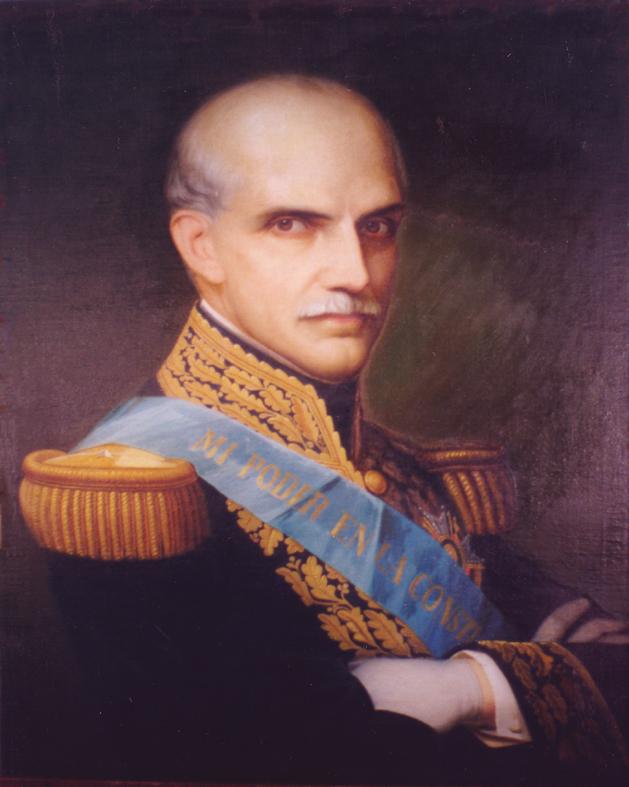 A violation of Ecuadorean territory by New Granada, though it led to a hostile collision in which García Moreno himself took part, had no serious consequences until the Arboledo administration gave place to that of General Mosquera, whose ambition it was to make New Granada the nucleus of a great “Colombian Confederation”, in which Ecuador was to be included. Urbina was not above writing encouraging letters to the New Granadan or Colombian dictator who was scheming against the independence of Ecuador. An invitation to García Moreno to confer with Mosquera elicited a very plain intimation that, so far as the national obliteration of Ecuador was concerned, there was nothing to confer about. But in the meantime the Republic of Ecuador had ratified a concordat with Pope Pius IX (1862), and the discontent of the Regalista party at home with the provisions of that instrument gave Mosquera an excellent pretext for encroaching upon his neighbour’s rights. The Regalistas were, without knowing it, a kind of Erastians, who claimed the appointment to ecclesiastical benefices as an inalienable right of the civil power. The President of Ecuador was charged with “casting Colombia, manacled, at the feet of Rome”; Urbina issued “manifestos” from Peru in the sense of “South America for the South Americans”; while the proclamation of President Mosquera recited, with others which seem to have been introduced merely for the sake of appearances, his three really significant grounds of complaint against García Moreno: that the latter had ratified the concordat; that he maintained a representative of the Holy See at Quito; that he had brought Jesuits into Ecuador. It may be remarked here, in passing, that if Mosquera had added to this catalogue of offences those of insisting upon free primary education for the masses, upon strict auditing of the public accounts, and a considerable bona fide outlay upon roads and other public utilities, his proclamation might have served adequately as the indictment upon which García Moreno was condemned and eventually put to death by those whom Pius IX ironically called “the valiant sectaries”.
A violation of Ecuadorean territory by New Granada, though it led to a hostile collision in which García Moreno himself took part, had no serious consequences until the Arboledo administration gave place to that of General Mosquera, whose ambition it was to make New Granada the nucleus of a great “Colombian Confederation”, in which Ecuador was to be included. Urbina was not above writing encouraging letters to the New Granadan or Colombian dictator who was scheming against the independence of Ecuador. An invitation to García Moreno to confer with Mosquera elicited a very plain intimation that, so far as the national obliteration of Ecuador was concerned, there was nothing to confer about. But in the meantime the Republic of Ecuador had ratified a concordat with Pope Pius IX (1862), and the discontent of the Regalista party at home with the provisions of that instrument gave Mosquera an excellent pretext for encroaching upon his neighbour’s rights. The Regalistas were, without knowing it, a kind of Erastians, who claimed the appointment to ecclesiastical benefices as an inalienable right of the civil power. The President of Ecuador was charged with “casting Colombia, manacled, at the feet of Rome”; Urbina issued “manifestos” from Peru in the sense of “South America for the South Americans”; while the proclamation of President Mosquera recited, with others which seem to have been introduced merely for the sake of appearances, his three really significant grounds of complaint against García Moreno: that the latter had ratified the concordat; that he maintained a representative of the Holy See at Quito; that he had brought Jesuits into Ecuador. It may be remarked here, in passing, that if Mosquera had added to this catalogue of offences those of insisting upon free primary education for the masses, upon strict auditing of the public accounts, and a considerable bona fide outlay upon roads and other public utilities, his proclamation might have served adequately as the indictment upon which García Moreno was condemned and eventually put to death by those whom Pius IX ironically called “the valiant sectaries”.
Mosquera was determined to have war, and all the efforts of the Ecuadorean government were of no avail to prevent it. At the battle of Cuaspud all but two battalions of the forces of Ecuador fled ignominiously. It is a matter for wonder, considering the grounds upon which he had declared war, that Mosquera, in the Peace of Pinsaquí, which followed this victory, should have left the Concordat of 1862, the delegate Apostolic, and the Jesuits just as they were. In March,1863, García Moreno tendered his resignation to the National Assembly, who insisted upon his remaining in office until the expiration of his term. Nevertheless he had to face, during the next two years, repeated seditions and filibustering raids. After sparing the lives of the leaders in one of these movements, though they had by all law and custom incurred the penalty of death, he was severely criticized for ordering the execution of another such when it had become evident that an example was necessary for the peace of the republic. In a naval battle at Jambelí (27 June, 1865) at which García Moreno was personally present, the defeat of the Urbina forces was complete, and tranquillity reigned until the presidential term expired on the 27th of the following August.
In the following year began what may be considered as a connected series of attempts which terminated, nine years later, in the assassination of García Moreno. The dispute between Spain and Peru over the Chinchas Islands had led to a war in which, following García Moreno’s advice, his successor Jeronimo Carrión had cast in the lot of Ecuador with that of the sister republic and its then ally, Chile. The ex-president was sent as minister plenipotentiary to Chile, with a commission to transact business with President Prado of Peru on his way. On his arrival at Lima an attempt was made to assassinate him, but it ended in the death of his assailant. His diplomatic mission resulted excellently for the friendly relations between Ecuador and its neighbours; the sojourn at Santiago also inspired García Moreno with a high admiration for Chile, and he even made up his mind to attempt a change of the Ecuadorean constitution so as to make it more like that of Chile, a project which he carried into effect in the National Convention of 1869. On his return to Ecuador he found himself a second time in the uncongenial position of leader of a revolution. To anticipate a plot which the Liberals, led by one of Urbina’s relations, were known to be forming, the conservatives of Ecuador had risen, declared Carrión deposed, and made García Moreno head of the provisional government. The justice of the grounds on which this extreme action was taken was established by the attempt of Veintemilla, at Guayaquil, only two months later, in March, 1869.
Having been duly confirmed as president ad interim by the National Convention of May, 1869, García Moreno resumed his work for the enlightenment, as well as the religious well-being, of his people. It was in these last years of his life that he did so much for the teaching of physical sciences in the university by introducing there the German Fathers of the Society of Jesus. The medical schools and hospitals of the capital benefited vastly by his intelligent and zealous efforts. In September, 1870, the troops of Victor Emmanuel occupied Rome; and on 18 January, 1871, García Moreno, alone of all the rulers of the world, addressed a protest to the King of Italy on the spoliation of the Holy See. The pope marked his appreciation of this outburst of loyalty by conferring on the President of Ecuador the decoration of the First Class of the Order of Pius IX, with a Brief of commendation dated, 27 March, 1871. It was, on the other hand, notorious that certain lodges had formally decreed the death of García Moreno, who, in a letter to the pope, used about this time the following almost prophetic words: “What riches for me, Most Holy Father, to be hated and calumniated for my love for our Divine Redeemer! What happiness if your benediction should obtain for me from Heaven the grace of shedding my blood for Him, who being God, was willing to shed His blood for us upon the Cross!” The object of numberless plots against his life, García Moreno pursued his way with unruffled confidence in the future — his own and his country’s. “The enemies of God and the Church can kill me”, he once said, “but God does not die” (Dios no muere).
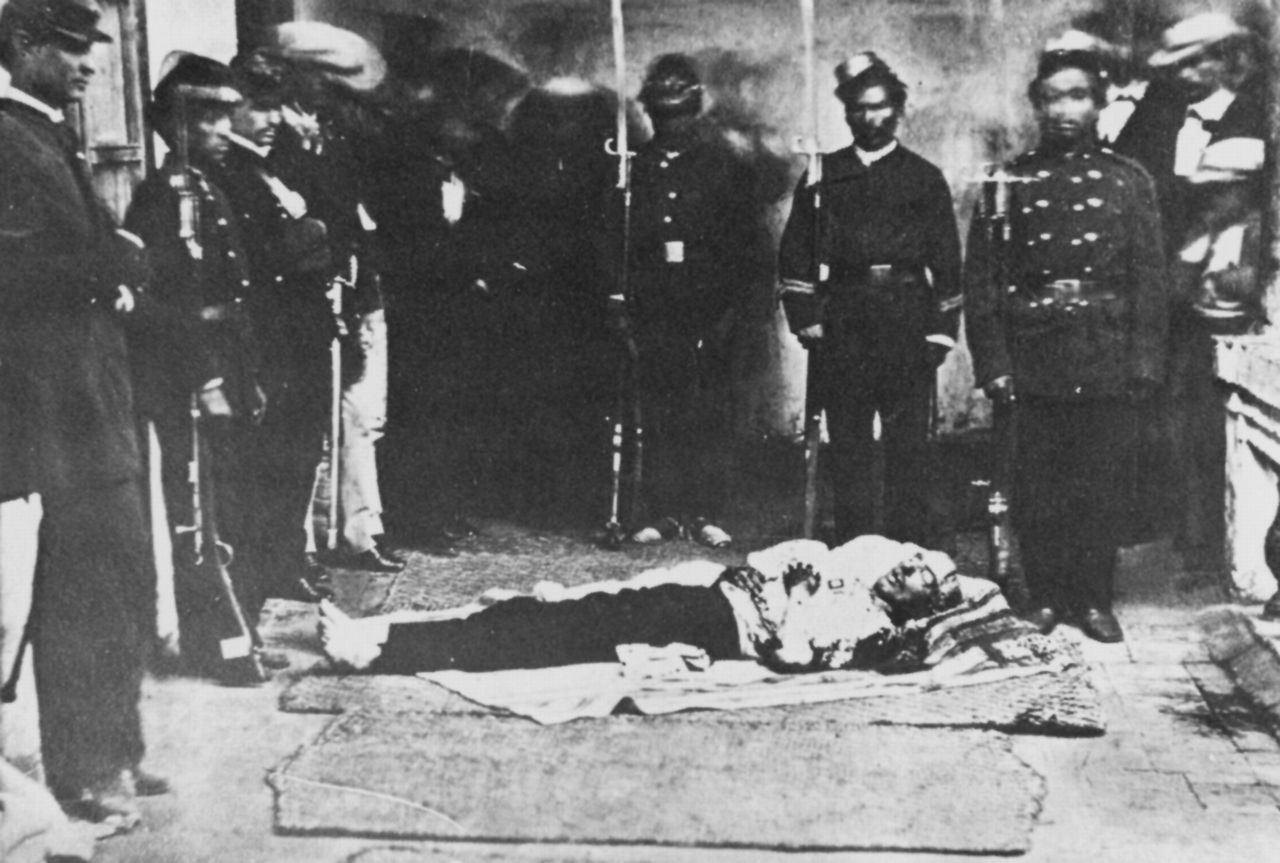 He had been re-elected president, and would soon have entered upon another term of office, when, towards the end of July, 1875, the police of Quito were apprised that a party of assassins had begun to dog García Moreno’s footsteps. When, however, the chief of police warned the intended victim, the latter so discouraged all attempts to hedge him about with precautions, as to almost excuse the carelessness of his official guardians. It came out in evidence that within the fortnight preceding the finally successful attempt, the same assassins had at least twice been foiled by the president’s failing to appear on occasions when he had been expected. Finally, on the evening of 6 August, the assassins found their prey unprotected, leaving the house of some very dear friends; they followed him until he had reached the Treasury, and there Faustino Rayo, the leader of the band, suddenly attacked him with a machete, inflicting six or seven wounds, while the other three assisted in the work with their revolvers. On hearing of the death of García Moreno, Pope Pius IX ordered a solemn Mass of Requiem to be celebrated in the Church of Santa Maria in Trastevere. The same sovereign pontiff erected to his memory, in the Collegio Pio-Latino, at Rome, a monument on which García Moreno is designated:
He had been re-elected president, and would soon have entered upon another term of office, when, towards the end of July, 1875, the police of Quito were apprised that a party of assassins had begun to dog García Moreno’s footsteps. When, however, the chief of police warned the intended victim, the latter so discouraged all attempts to hedge him about with precautions, as to almost excuse the carelessness of his official guardians. It came out in evidence that within the fortnight preceding the finally successful attempt, the same assassins had at least twice been foiled by the president’s failing to appear on occasions when he had been expected. Finally, on the evening of 6 August, the assassins found their prey unprotected, leaving the house of some very dear friends; they followed him until he had reached the Treasury, and there Faustino Rayo, the leader of the band, suddenly attacked him with a machete, inflicting six or seven wounds, while the other three assisted in the work with their revolvers. On hearing of the death of García Moreno, Pope Pius IX ordered a solemn Mass of Requiem to be celebrated in the Church of Santa Maria in Trastevere. The same sovereign pontiff erected to his memory, in the Collegio Pio-Latino, at Rome, a monument on which García Moreno is designated:
Religionis integerrimus custos Auctor studiorum optimorum Obsequentissimus in Petri sedem Justitiae cultor; scelerum vindex.
The materials for this article have been derived from a biography, now extremely rare, written by a personal friend and political associate of García Moreno, HERRERA, Apuntes sobre la Vida de García Moreno. See also: BERTHES, García Moreno (Paris); Les Contemporains (Paris, s.d.), I; MAXWELL-SCOTT, Gabriel García Moreno, Regenerator of Ecuador in St. Nicholas Series (London and New York, 1908).
E. MACPHERSON (Catholic Encyclopedia)
________________________________
Of interest:

